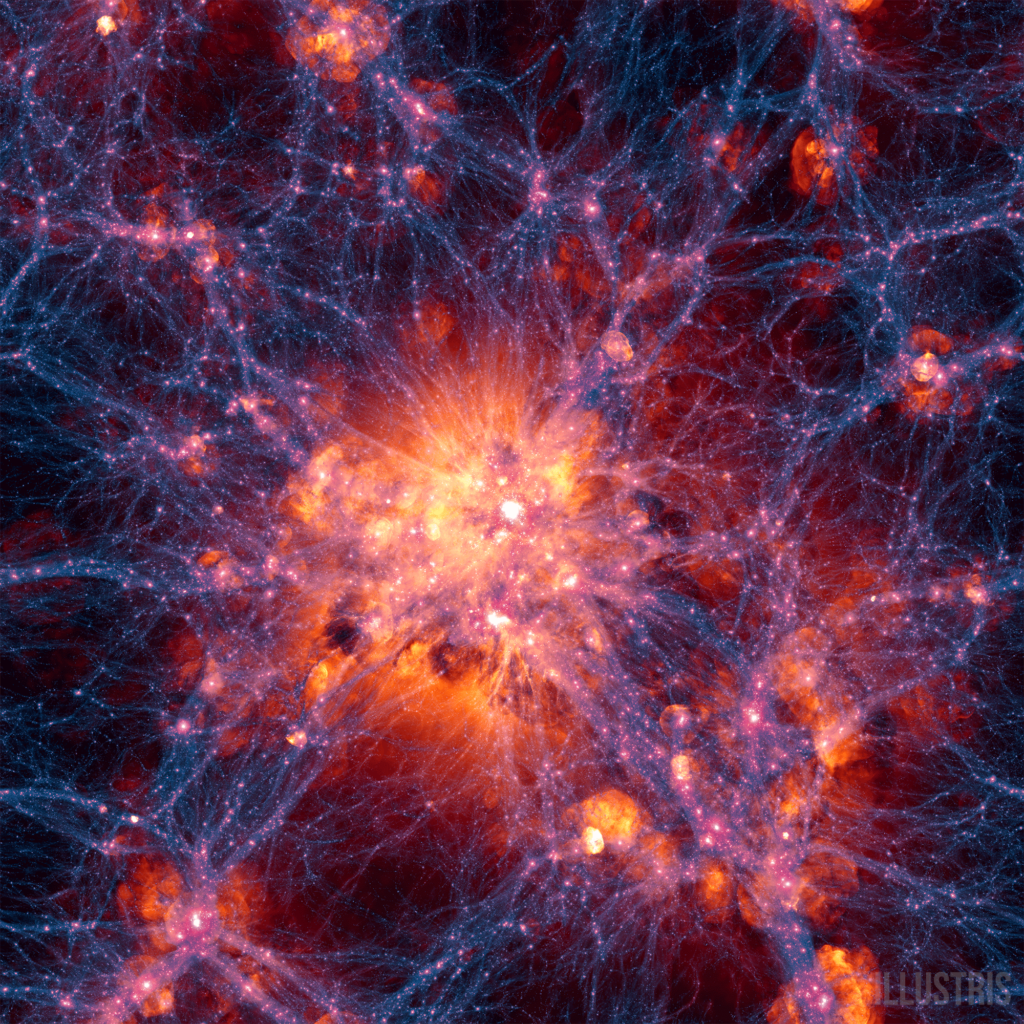What is Dark Matter?
The evidence suggests that most of the mass which makes up our universe is not made from particles we know about, those in the Standard Model of Particle Physics.
We can infer that this ‘dark matter’ really exists out there in the cosmos from its gravitational effects, regardless of its composition. These effects are at play within galaxies including our own Milky Way, in distant clusters of galaxies, and at the largest cosmological scales. The dark matter causes the ordinary, visible matter around it to move faster that one might expect, and that is how we know of its existence – without having ‘seen’ it directly.
We call it ‘dark’ because it does not emit or absorb electromagnetic radiation, making it very difficult to observe. Experiments such as LZ attempt to detect the very rare and faint interactions which we think could occur between dark matter particles in our galaxy and ordinary atoms at the core of a very sensitive radiation detector. These particles are going through us all the time and with the right detector we may be able to glimpse their rare interactions.

The CMB has imprinted on it very tenuous features generated when the first hydrogen atoms were formed, when the universe was only 380,000 years old. The CMB spectrum, combined with other cosmological data, can give us a precise estimate of the total mass of the universe in its infancy, but also the fraction of that mass which was made of ‘normal’ particles. With great excitement we discovered that this deficit of ordinary matter was already present at that stage, before the first galaxies were even formed. A new dark matter particle produced soon after the Big Bang can explain this observation, and also how the universe evolved its structure as it expanded and cooled – but it is hard to find an alternative explanation that works so seamlessly at all scales.
Even more surprisingly, the CMB and other cosmology experiments also discovered that the universe is being driven to expand ever more rapidly as if pushed by a mysterious ‘dark energy’ – while dark matter acts in the opposite way, trying to slow it down. If we have little knowledge about dark matter, dark energy is an even greater mystery. The Standard Model of Cosmology relies on these two ‘dark fluids’ and is able to explain the evolution of our universe very successfully.
Unfortunately, neither Standard Model (of Particle Physics or of Cosmology) predicts what this dark matter particle could be. Several possibilities exist, but the best motivated class is the Weakly Interacting Massive Particle. WIMPs are neutral, stable, slow and reasonably heavy particles, weighing as little as a proton or as much as a many heavy atoms put together. If one assumes that such particles interact via the weak nuclear force, then their extensive production soon after the hot Big Bang would have left over enough particles to give us the observed abundance of dark matter today.
LZ will search for the rare scattering of our galactic WIMPs from ordinary xenon atoms in its active mass, the faint “elastic scatters” causing xenon atoms to recoil, much like the collision between billiard balls.
